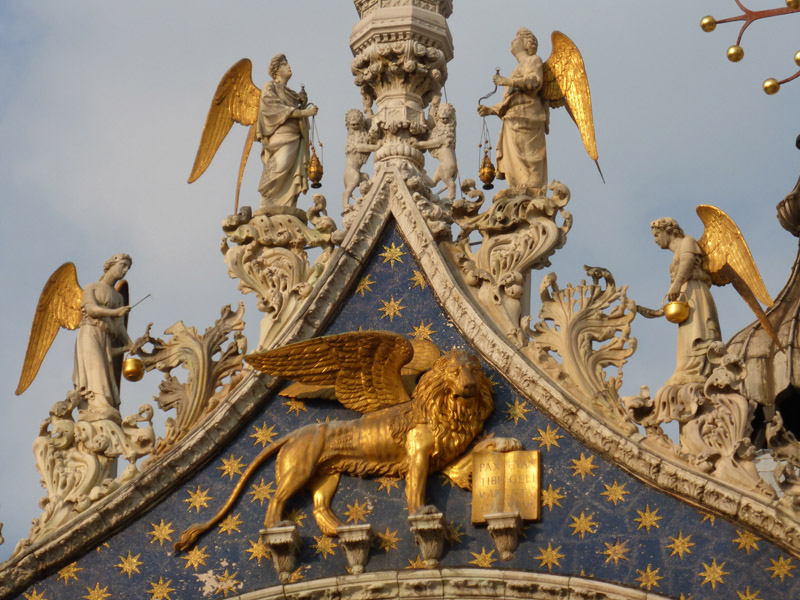
Seeing as old gorgeous George has just got hitched in La Serenissima, I thought I might pop along too. A few pictures here of a previous visit, where I was documenting the lesser, unseen side of Venice. We all know what the media like to portray: the beauty of it all. But there is another side.
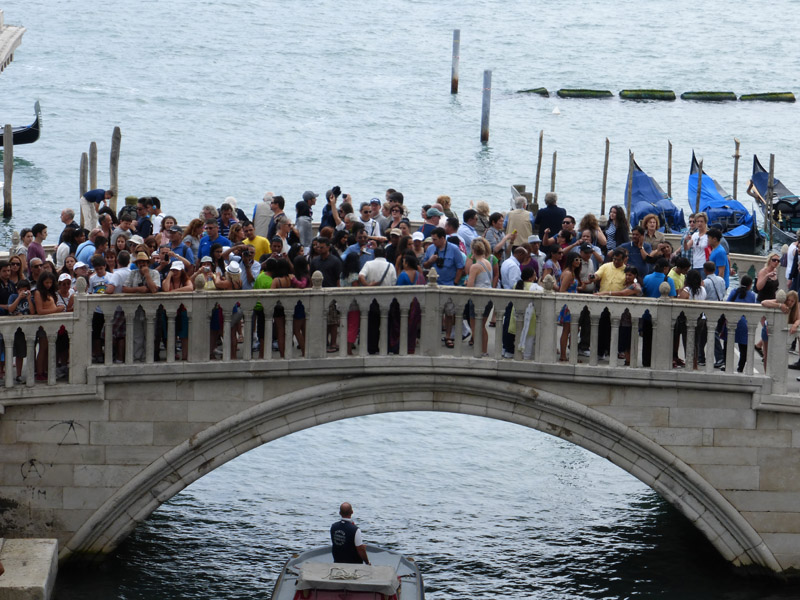
Hideous amounts of tourists is the biggest downside.
But then there is the practical side to think of too.
How do you get all that food and drink onto the islands of Venezia? Answer: by boat, of course. Here is the good ship Barbara hard at work on the morning run:
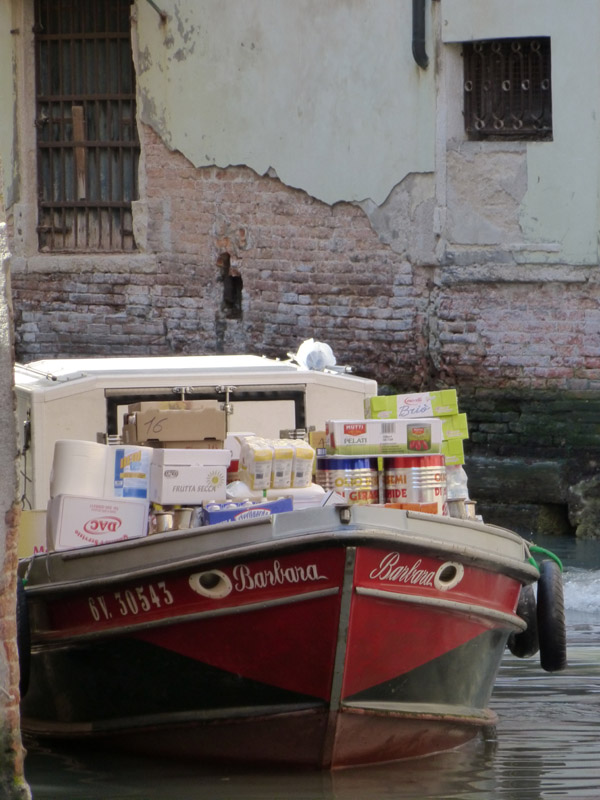
Of course, in the old days, the drinking water for the city was via a series of wells dug deep into the basin – if they weren’t polluted then, they certainly are now, and they’re sadly all covered over. No more gossiping over the water-gathering…
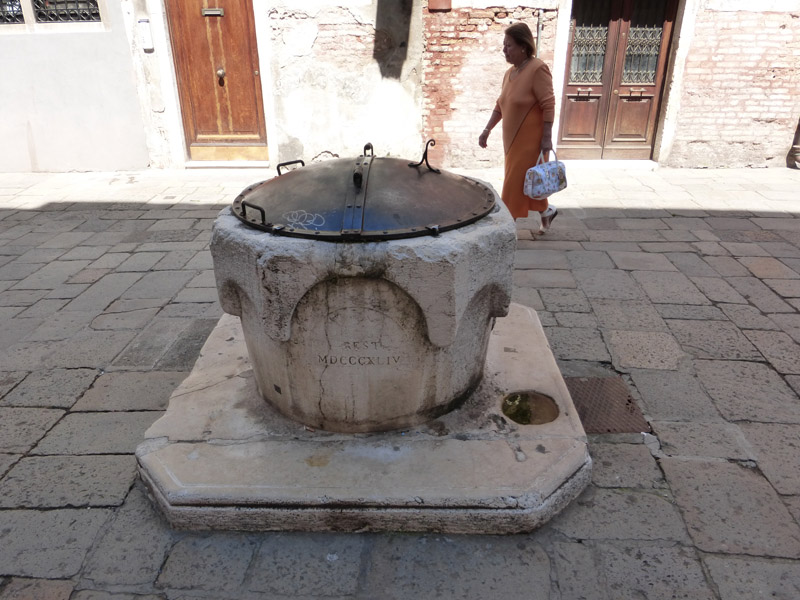
Sometimes, deep in the hearts of the Museums, you come across something that raises your eyebrows more than just a little. Here, for instance, in a display case full of torture instruments – such as a genuine portable thumb-screw (used), or a studded collar (with the studs on the inside for maximum effect), or even the chastity belt. Now you’ve probably heard of the hoary old story about the knight who went away on Crusade, entrusting the key to his wife’s belt to his good friend…. no such friendship here. This is a serious “don’t fuck with me” belt, both from the front or from the rear. Unpleasant for all concerned, especially for the poor wife, who may have had to spend months locked up in this devilish contraption.
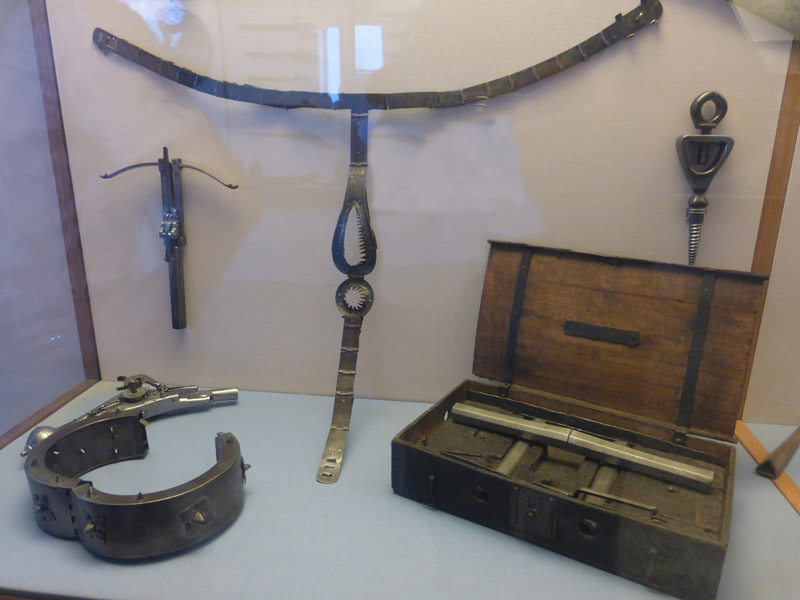
Yes, George, Venice has a dark heart… It is somewhat ironic that you choose to marry your human rights sweetheart here, where the Moors and the Turks – and the Venetians – were routinely tortured…
Lastly, of course, in a land where the rubbish truck is a physical impossibility, spare a thought for the poor serfs who have to clear away the refuse of 50,000 tourists per day in the summer months – all of it by hand…





Great population density, a lack of cars and walkable (once you work out where the hell you are!). I wonder how bad their CO2 emissions are compared to us in dry old Wellington?
Surely must be a massive amount of rubbish produced, mainly in the form of plastic drinking bottles and gelato wrappers…, but as you say, zero auto emissions – except for the vaporetto boats with little chug chug engines.
Just a thought: if Venice’s symbol of the city is a golden winged lion standing, with one paw upon a book, then that begs the question: what is Wellington’s symbol / animal ?
Well, Humperdinck, I’m not sure if Wellington has a great symbolic animal really. We have a civic crest of course, and a coat of arms, apparently which features a lion (rampant) and a moa (presumably also rampant, although it might just be standing eating a mouthful of shrubs). There is also a dolphin swimming about the picture. But none of these really feels like “our” civic animal, although Trevor Mallard nearly succeeded in putting the moa on the map for Wainuiomata…. If we were to have an animal, I’d suggest that it is not a mammal but a bird, reminiscent of the success of Zealandia perhaps. We can’t lay claim to the great Eagle of Haast, although at a stretch we could talk about the great eagles from Tolkien via Jackson. But my personal favourite would be the Kaka. Not as majestic as an eagle perhaps, but smaller and feisty and a burst of plumage under its wings to knock your socks off. Sounds like a Wellingtonian to me.
You’re in the most beautiful city on the face of the planet, and you take pictures of its rubbish trucks? You are truly a very odd fish.
http://en.wikipedia.org/wiki/Wellington_City_Council
There is a blurb about the coat of arms there, if you’re a nerd like that.
Andrew, I also took some other photos as well. If you’re nice to me, I might show you those as well….
Reading a book on Palladio, as you do, I recently came across an interesting snippet when it was describing the history of Venice.
“Venice still looked eastwards, until a series of far-reaching events in the later half of the century began to undermine its dominion of the sea. First Constantinople fell to the Turkish advance (1452), followed by Trebizond (1461) and the island of Negroponte (1470). These losses were a severe blow to Ventian trade, and the situation was aggravated shortly after with the discovery of America and the diminished importance of the Mediterranean, leading to the inevitable decline of the Venetian Republic.”
Donata Battilotti, The Villas of Palladio, (1990), p11.
I’ve always wondered what it was that led to Venice going from being the most powerful nation on earth (as it was, at the time), to being just a tourist curio, a cultural backwater. Intriguing to think that America had a part to play in its downfall – and so perhaps appropriate that Clooney, as reigning cultural duke of the Americano hegemony, pay a ducal visit back to the home of the formal empirical rival.
Venice’s story is basically the story of seasoning- the city first grew based on the salt pans of the Adriatic, then it began trading spices with the great city’s of Constantinople, Cairo/Alexandria and Antioch – whilst the discovery of America was what pulled the wider axis of European power away from the Mediterranean it was really Vasco de Gama’s establishment of the spice route around Africa that ruined venetian commerce (all of the other eastern Mediterranean cities went into decline as well) as it diverted the spice trade south across the Indian Ocean.
The really fascinating bit is the effect this decline has had on the future of the city. Once Napoleon ended the city’s independence it really only had its beauty to trade on- so they began to stop replacement of the buildings. The cycle of renewing the buildings by layering new foundations and buildings over the old is what kept the city from sinking under ordinary conditions – sort of like jenga- but since dewatering of the aquifers and diversion of silt these processes have been all the faster. I guess the lesson is since it stopped functioning as a city it has lost the resilience of a city.
Isn’t that the problem? It’s just so hard to escape the deadening effect of cuteness and obsolescence. Seems that when cities stop changing because they have lost the mercantile or demographic imperative to renew and mutate they can get prettier and more beloved, but they also start to die. Sometimes that is expressed as a stultifying, tourist-friendly sheen, other times it’s more like a slow settling into the lagoon.
Is that what JohnKey meant when he said that Wellington was dying and he didn’t know what to do about it? Did he really just mean that the capital has “lost the mercantile or demographic imperative to renew and mutate”?
Perhaps the unpalatable corollary is that once the urge to preserve and polish gets too strong it starts to stifle that mercantile and demographic imperative. The cart before the hearse…
Tres droll Monsieur Starkive, tres droll…
Now – am I the only one to have been intrigued by the mention of Trebizond in the little history snippet above (and thank you for your input Splanned). Trebizond. Never heard of it before today. Put the word into the google thingy, and you get “The Kingdom of Trebizond”. Really? There was a whole kingdom, and I didn’t even know it existed? I presume I’m not the only one. But it’s fascinating – I’ve been whiling away the hours reading up about this former little Kingdom. On the north coast of what is now Turkey, it once used to be the terminus of the Silk Road. Fascinating. Last bit of the Byzantine Empire – which means that in a land of Turkish Muslims, there is this little pocket of basically Greek former Christians, sitting on what remains of the end of an empire.
Now of course, Venice was the end of an empire as well (do you know that they used to have trireme galleys which would trade with England? Sailing and ROWING from Venice to England?!?). I dunno. The older I get, the more interested I am in history.